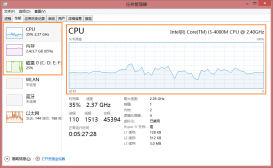MongoDB的特点
MongoDB是一个面向文档存储的数据库。在MongoDB中,一条记录叫做document(文档),由类似于JSON结构的键值对组成。

由于类似于MongoDB直接存储JSON的特性,MongoDB天生适合作为存储结构复杂的数据结构的介质。类似于问卷调查和考试这种需求,用mysql这种关系型数据库实现起来太过复杂,效率低下;而如果使用MongoDB来实现的话,则会发现异常清晰简单。
需求分析
在一张试卷中,会有很多个问题,问题的类型大体上可以分为单选题、多选题、判断题、简答题等。每一个问题又会有很多个选项,选项可以是文字描述也可以是图片又或者图文结合。

那么一张试卷的JSON格式应该大体上长成这样:

当然这只是最简单的数据结构,要完成一张试卷,还需要加入更多的属性。
结构设计
我们采用自底向上的结构设计方式,先对每个选项的数据结构进行设计。
选项设计
|
1
2
3
4
5
6
7
8
9
10
11
12
13
14
15
16
17
18
19
20
21
22
23
24
25
26
|
public class Option { /** * 选项类型 */ private Integer oType = 1; /** * 选项内容 */ private String text; /** * 选项图片 */ private String img; /** * 是否正确答案 */ private Boolean right; /** * 用户是否选择 */ private Boolean selected; ... |
选项类型 oType 用来标志选项是普通文本还是图片或者图文; right 用来标志这个选项是否是正确答案,用于自动判卷; selected 用来标志用户有没有选择这个答案。
问题设计
|
1
2
3
4
5
6
7
8
9
10
11
12
13
14
15
16
17
18
19
20
21
22
23
24
25
26
27
28
29
30
31
32
33
34
35
36
37
38
39
40
41
42
43
|
public class Question extends MongoBean { /** * 数据的id */ private String dataId; /** * 题目类型,1判断题;2单选题;3多选题 */ private Integer qType; /** * 题目标题 */ private String title; /** * 题目选项 */ private List<Option> options; /** * 数据类型 * @see rmjk.enums.BizTypeEnum */ private Integer dataType; /** * 数据标题 */ private String dataTitle; /** * 解析 */ private String analysis; /** * 这题是否答对 */ private Boolean right; /** * 这题答的时长 */ private Long duration; /** * 这题的得分 */ private Long points; ... |
dataId 用于将这个问题同一个业务数据绑定, dataType 用来标志这个业务数据的类型,这两个字段方便数据的扩展; dataTitle 是业务数据的标题; options 是这个问题的选项; analysis 问题的解析,用于用户答题结束后的自查; right 用来记录问题的正确与否。
新增问题
上层接口
提供新增问题的接口:
|
1
2
3
4
5
|
@PostMapping("/saveOrUpdateQuestion")public JsonData saveOrUpdateQuestion(@RequestBody Question data) { questionService.saveOrUpdateQuestion(data); return JsonData.success();} |
QuestionService:
|
1
2
3
4
5
6
7
|
public void saveOrUpdateQuestion(Question data) { if (StringUtils.isEmpty(data.getId())) {// 新增 writer.insert(manager.getExamDataBase(), ExamConstant.QUESTION_COLLECT, data); } else {//修改 writer.updateDocument(data, ExamConstant.QUESTION_COLLECT); }} |
DAO
Writer:
|
1
2
3
4
5
6
7
8
9
10
11
12
13
14
15
16
17
18
19
20
21
|
public void insert(String dataBase, String collect, MongoBean data) { if (data.getId() == null) { data.setId(BsonTool.uuid()); } MongoCollection<Document> collection = getCollection(dataBase, collect); collection.insertOne(Document.parse(JSONObject.toJSONString(data)));}public Document updateDocument(MongoBean data, String questionCollect) { Document filter = new Document(); filter.put("id", data.getId()); Document res = new Document(); res.put("$set", BsonDocument.parse(JSONObject.toJSONString(data))); update(manager.getExamDataBase(), questionCollect, filter, res); return res;}public boolean update(String dataBase, String collect, Bson filter, Bson update) { MongoCollection<Document> collection = getCollection(dataBase, collect); UpdateResult ur = collection.updateOne(filter, update); return ur.getModifiedCount() > 0;} |
这样后端的工作就全部完成了,接下来就是前端怎么给后端提供这样的数据结构了。
前端实现数据结构
前端使用 vue 实现JSON的构造:
|
1
2
3
4
5
6
7
8
9
10
11
12
13
14
15
16
17
18
19
20
21
22
23
24
25
26
27
28
29
30
31
32
33
34
35
36
37
38
39
40
41
|
<Modal id="codetool">
这里绑定的 question 就是一个问题了。而一张试卷则是由多个问题,再加上试卷的额外属性构成的。
在 question 上的dataId刚好就能绑定上试卷的id
总结
以上所述是小编给大家介绍的MongoDB实现问卷/考试设计功能,希望对大家有所帮助,如果大家有任何疑问请给我留言,小编会及时回复大家的。在此也非常感谢大家对服务器之家网站的支持! 原文链接:https://segmentfault.com/a/1190000020864018 延伸 · 阅读
精彩推荐
|















